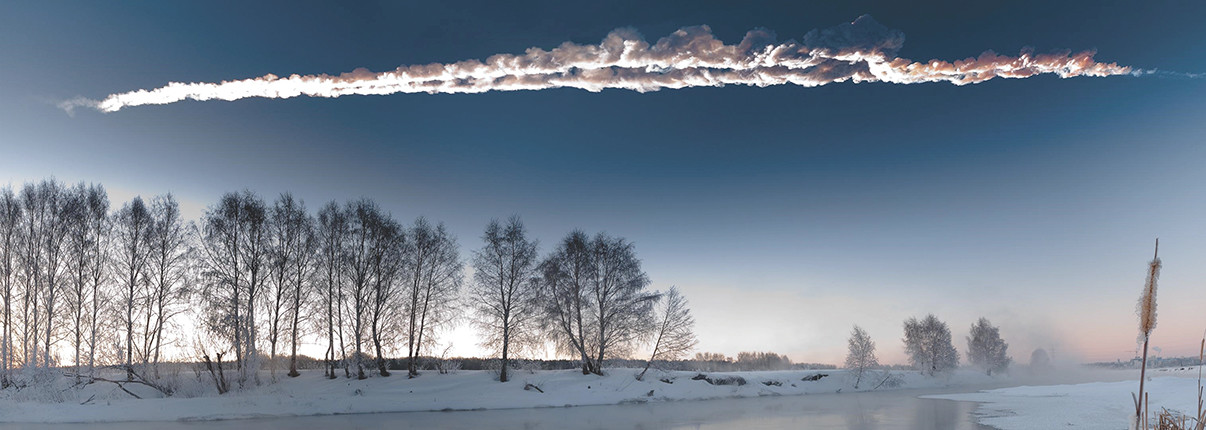On February 15, 2013, a small asteroid (also known as a super bolide) about 20-meters wide (~65-feet) impacted over the city of Chelyabinsk, Russia. The asteroid entered the Earth's atmosphere at a speed of about 19 kilometers per second (= 12 miles per second or ~41,000 mph) and its brightness - as it exploded into the atmosphere - exceeded that of the sun. Numerous early-morning commuters captured live video of the streaking asteroid; video that later played a key role in determining the pre-impact orbital path of the asteroid. The asteroid came in at a fairly shallow angle and therefore its impact energy was largely dissipated into the atmosphere about 30-kilometers (18 miles) above the earth's surface. The pre-impact kinetic energy of the asteroid exceeded 400 kilotons TNT, or about 30x the blast yield of the atomic bomb released over Hiroshima in WWII. Numerous small fragments were strewn about the snowy landscape and into frozen lakes, and many fragments were recovered by locals and researchers.

The Chelyabinsk asteroid shown above during its explosive entry into Earth's upper atmosphere went completely undetected since it came from the direction of the sun, a 'blind spot' for existing asteroid surveys. Photo M. Ahmetvaleev.



